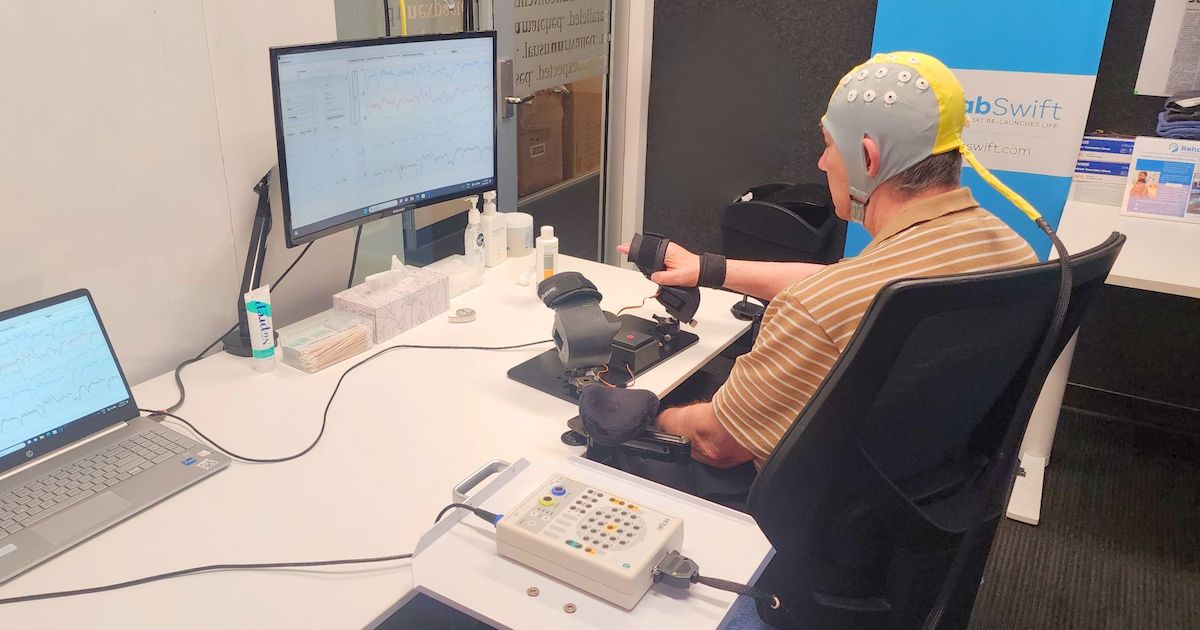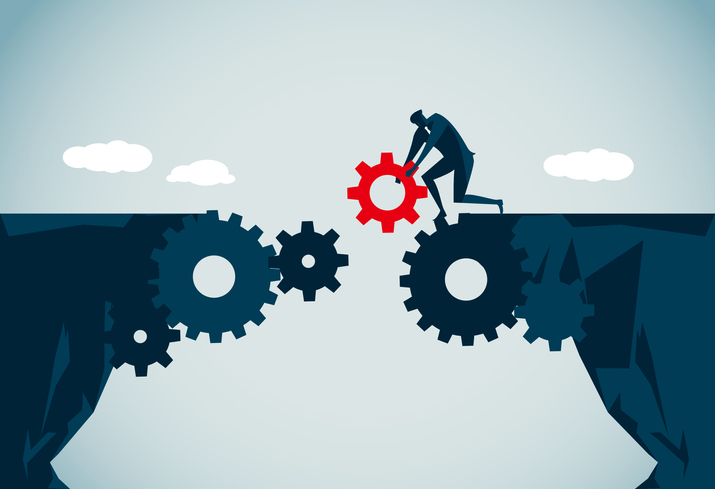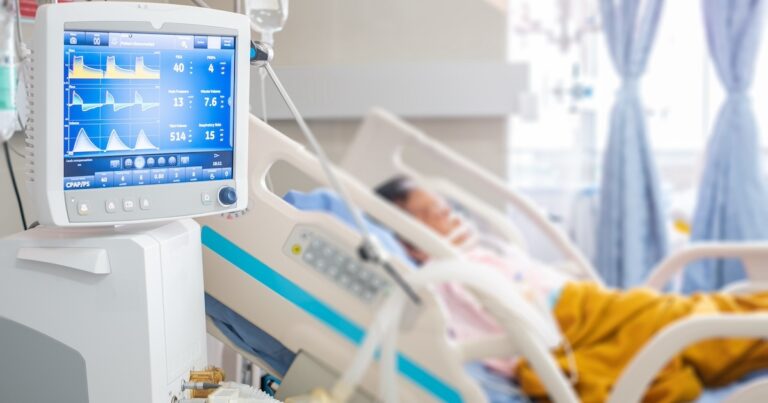
A computer-based therapy can potentially help stroke survivors recover some movements in their hands.
A new study in South Australia assessed the effectiveness of a brain-computer interface (BCI) system in decreasing post-stroke arm and hand weakness.
FINDINGS
The study recruited 12 chronic stroke survivors around the state who had limited arm mobility but kept a sharp mind. They underwent 18 neurofeedback training sessions using a BCI system by RehabSwift, a medtech company incubated at the University of Adelaide’s ThincLab.
The Therapeutic Goods Administration-approved RehabSwift system consists of a special head cap that captures a user’s brain activity and a pair of exoskeleton hands that translate their imagined finger movements. When a user imagines moving their fingers, the head cap captures their brain activity, which a computer algorithm translates into commands for the user’s bionic hands to make their fingers physically move.
The BCI system personalises stroke rehabilitation by identifying the best part of a user’s brain to focus training on, selecting the optimal brainwave frequency, and adjusting the timing between imagining a movement and receiving feedback.
Based on findings published in Oxford University Press’s PNAS Nexus, the BCI-based therapy demonstrated “remarkable” improvement in hand movement and a “clinically significant” reduction in post-stroke arm and hand impairment, with effects lasting for up to six weeks. The research considered the participants’ reaction times, sensorimotor impairment, functional performance of their upper limbs, pinch and grip strength and personal goals.
WHY IT MATTERS
“Stroke often results in debilitating motor impairments, the most common being upper limb involvement, which impacts an individual’s quality of life and independence. Despite completing conventional therapies, a significant number of stroke survivors face ongoing difficulties in regaining full motor function,” the study’s authors noted.
Their study have proven the potential of a BCI system in facilitating hand movement recovery among stroke survivors. “The results indicate that personalised [BCI] therapy helps to rewire and restore the brain’s neural pathways, which are damaged as a result of stroke,” said Mathias Baumert, the study’s senior co-author and an associate professor of the University of Adelaide’s School of Electrical and Mechanical Engineering.
The researchers now look to expand their study cohort, aiming to further investigate the long-term effects of BCI-based therapy and determine its viability as a standard treatment.
MARKET SNAPSHOT
Wearable systems have been developed and tested in recent years to facilitate the rehabilitation of people who experienced stroke. Singaporean startup SynPhNe, which received $4 million in Series A funding in March, claims to offer the world’s first connected wearable system that simultaneously trains the brain and muscle to support stroke recovery.
Researchers from Hong Kong Polytechnic University have invented ankle foot and upper limb wearable rehabilitation robots to assist with recovery training of stroke patients.






